I’ve worked with thousands of sales candidates seeking new careers in sales, and those looking for career progress with a new role.
While several questions seem to be timeless favorites of hiring managers, I’ve also seen quite a few changes and trends.
The sales interview questions in this article are the ones you will most likely face in 2023, based on what I’ve observed sales managers asking in the last two years.
And the answers I suggest have helped reps secure the best job offers.
Use this guide to prepare yourself when interviewing for a sales position, and you’re a shoo-in to get the job.
Table of contents
Related Sales Hacker discussions:
Top 5 sales job interview questions to know
Panicking about a sales job interview in 15 minutes? This is the section for you.
1. What do you know about our company so far?
Interviewers ask this because:
They want to know you took time to understand the company and the role before the interview. If they see that you’re unprepared for the interview, they’ll assume you’ll be unprepared for sales calls as well. Not a good look.
Doing this research is a key part of being a great sales rep, but they want to hear that you are interested in what they specifically do. Everybody wants to work with enthusiastic people.
How to answer:
Think of this as one of your first (and best) opportunities to sell yourself, so do your homework!
Look at their website, and ask yourself who they are selling to (what title, what type of company) and what problems they are solving for that person.
If it’s a public company, look up their S-1 filing so you can see how they communicate about themselves to investors.
Connect with future colleagues and managers on LinkedIn, ask them about what it’s like to work there, and look at their social media activity to gather insights about what the job is like day-to-day.
Read reviews on sites like Capterra, G2, Yelp, or Google.
Most importantly: consider your “why” — the thing that motivates you to be who you are. Notice where it overlaps with the mission of the company and point out the similarities. Let them know specifically what it is about their company that is exciting to you.
Example answer:
“I’ve been following some of the sales leaders at your org on LinkedIn and I’ve seen a consistent message across the board: it’s about the people.
It’s about the customers, partners, teammates, and the broader community. It’s exemplified in the way your leadership recognizes those people publicly.
Your mission to change the way companies engage with customers throughout their lifecycle really resonates with me, too. I want to help the sales community rise and adopt the best technology like the one you offer, while contributing to a greater social mission.
From everything I can see, your company provides a great environment to do that kind of work.”
2. Why [insert industry] sales?
Interviewers ask this because:
They want to know that you understand what you would be selling, and that you have an interest in it. A disinterested SDR can kill a cold call (not in a good way), and an AE who doesn’t have an interest in their solution has little chance of closing a deal.
They’re also trying to make sure they won’t hire somebody who will do shady things just to close a deal.
This question is the hiring manager offering you a chance to highlight your passion and show you’re a trustworthy person.
How to answer:
Know the qualities specific to that industry and speak to why they interest you. For example, tech is known to be fast-paced with lots of growth opportunities, while pharmaceutical sales is more relationship-driven.
Make sure you know your “why” before going into any interview. Did you have a lemonade stand as a kid? Was a family member in sales? Did a class, internship, or club pique your interest?
Don’t be afraid to say you are financially motivated to be in a sales role. This is one of the only careers where your hard work literally pays off.
Example answer:
“I’ve always been a very competitive person and love a good challenge. Even early on, in my schooling days, I would compete in all academic programs (like speech and debate). I loved the process of researching, preparing, and the thrill of competing for the #1 spot.
I believe I’ll thrive in a fast-paced tech sales role and be motivated to hit my numbers and ultimately make bigger commission checks.”
Note:
While this example features an answer for a competitive person, it can be adapted for so many different skills. Think: Creativity, making an impact, partnership and camaraderie with a team, growing in business acumen, and more.
3. Tell me about a time you succeeded or were proud of yourself
Interviewers ask this because:
They want to understand your drive to succeed, and hear about one of your greatest accomplishments.
Plus, if when you get the job, your manager will need to know how to motivate you.
How to answer:
Questions that start with “tell me about a time” indicate that your answer to this question should use the STAR framework:
S = Situation. Briefly describe the situation you were in.
T = Task. What were you tasked with doing in that situation? What was the goal?
A = Action. Tell the interviewer what you specifically did, step by step.
R = Result. What was the outcome?
Remember that you are interviewing for a sales role, so keep your response focused on something relevant to sales. Share a time when you were persistent and it paid off, when you worked hard to knock a goal out of the park, when you accomplished a significant achievement, etc.
If you have data to back you up, that is gold!
4. How have you stayed motivated in a remote world?
Interviewers ask this because:
Many sales teams are still hybrid or fully remote. And it seems like the majority will continue to operate at least in a hybrid environment for the foreseeable future.
The tough truth is that working remote in a sales role is challenging. You lose the energy from being together with peers, you lose overhearing what’s working on someone else’s call, you lose the celebration from the team when someone finally picks up. So interviewers want to know either that you thrive in that environment, you’ve found a way to make it work for you, or you have a plan for it.
How to answer:
Think about what tools you use to connect with people: Zoom or another video software, Slack or another chat software?
Think about the rituals that help you feel connected to your teammates: regular happy hour or coffee chat? Rotating catch-up soons? Coworking with peers in your area?
Think about what motivates you: recognition? Achieving goals? Financial incentives?
Bonus resource:
Example answer:
“Before I jump into my work day, it’s important that I take care of myself first. Instead of rolling out of bed and opening my laptop, I give myself ample time to get ready for the day, do something I enjoy (reading, journaling, walking), and set intentions for the day.
I prioritize refreshing myself during the day as well so that when I’m working, I’m truly focused and bringing my best self to work.”
5. What do you think will be your biggest challenge in your first three months as an SDR (Sales Development Representative) or AE (Account Executive)?
Interviewers ask this because:
This is a chance to show that you know that sales roles are demanding. We often hear sales leaders hesitant to hire those who haven’t worked in a sales environment before, and when we press them, they say it’s because successful sales people know what to expect from the job.
How to answer:
- Acknowledge you know this is a difficult role
- Mention your traits that help you remain positive and bounce back
- Talk about why it is worth it for you to succeed in this role
Resources:
Example answer:
“I think the SDR role will teach me how to bounce back from rejection. I’ll have to get used to hearing “no” frequently.
I consider myself a very optimistic person and I don’t take criticisms to heart, so while this may be a challenge, it won’t be impossible to overcome. I’m not a quitter, and I always see challenges through to the end, so I will treat this as a learning opportunity that will only make me better and more resilient in the future!”
Common interview questions for any sales representative role
6. Why are you looking for a new role?
Interviewers ask this because:
They are looking for a positive, forward-thinking attitude. They want to see that you have a growth mindset and will tackle the new role with energy and enthusiasm.
How to answer:
Do not talk about why your current situation sucks. In fact, show gratitude for what you learned from it.
Remain focused on the future opportunity ahead of you.
Example answer:
“The past year with my current employer has taught me so much. While I’m so grateful to have had the opportunity, I’m ready for the next big adventure—filled with new learnings and areas for growth.
Specifically, I’m looking for a role where I can learn [XYZ new skills], and work with a team to accomplish [ABC goal].”
7. Where are you in your search?
Interviewers ask this because:
They want to know how quickly your process needs to move and how seriously you are taking the job search.
How to answer:
Just be honest. If you are interviewing with other companies, if you aren’t, if you got a verbal offer, if you haven’t completed interviews yet — just be honest.
8. Pitch our company to me
Interviewers ask this because:
They want to know that you did your homework on their company, and they want to assess your communication skills. Can you talk about the business in a way that makes sense, highlights the value, and avoids buzzwords?
How to answer:
Have a clear, concise pitch statement ready to go.
Example answer:
Try this format:
{Name of company} helps {insert buyer} solve their {insert key challenge the product solves} by {describe the solution}.
Related Discussion: How to succeed at a role play interview as an AE?
9. Walk me through your resume/background
Interviewers ask this because:
They want an easy recitation of your relevant experience so they can start to assess fit. And they also want to see if you can hit critical and relevant points of a story in a short time.
How to answer:
Keep it to 90 seconds.
Spend time on the elements of your experience that are most relevant: A club at school? Athlete? Door to door sales? Lemonade stand? Waitress?
They don’t need to know everything about each role; they’ll just want to hear the skills that you learned that will help you excel in sales.
Example answer:
“In my most recent job experience, I managed the front desk with a busy multi-line phone system. While being responsible for multiple tasks, like greeting guests on arrival and receiving and sorting mail to 100+ employees, I learned how to comfortably handle communications (in person and on the phone) and balance that work my other responsibilities. Before that, I interned at a public relations company and got some great exposure to how businesses position themselves in the market.
It was important to keep a positive attitude even when the external environment was hectic and ensure that the customer and their needs were always top priority. I believe both of these experiences are relevant and set me up for success in the fast-paced role of a customer-facing sales rep.”
10. How soon are you able to start?
Interviewers ask this because:
They might want to get a sense of how serious you are about the role, but this question can also be about simple logistics. They know when they need somebody – they want to know when you’re available, so they can plan properly.
How to answer:
Standard time in the United States to give your current employer is 2 weeks notice. Other countries have different norms, though. In the UK, for instance, I’ve heard of people giving 2-3 months notice.
Regardless, remember that how you treat your current employer is indicative of how you’ll treat them.
If you have another reason that would prohibit you from 2 weeks, be honest and clear. They’ll wait for the right person!
Example answer:
“I’d like to give my current employer two weeks’ notice, so I don’t leave my team in the lurch. I’m sure you can understand. I’m available to start immediately after that.”
Or
“I’d like to give my current employer two weeks’ notice, so I don’t leave my team in a bind. It’s also very important to me that I start this new role with a clear mind, lots of energy, and free of distractions in my personal life, so I’d like to ask for a week in-between roles.
If that’s not feasible, I can be flexible. I’m eager to get started.”
11. What is most important to you in your next company?
Interviewers ask this because:
They want to be sure you are a great match. As much as you want to show you are a good fit for them, they want to be sure they are a good fit for you.
They might also be trying to get a sense of your thought process as you search for a new role. Did you apply because you were just “throwing spaghetti at the wall,” or did you see something about their company that specifically drew you in?
How to answer:
Again, be honest. Come up with two to four things that are truly important to you in a working environment. They don’t necessarily need to be things you already know about the company to which you’re applying.
Maybe they reference workplace culture, tools that are available, management styles, access to resources, etc.
Example answer:
“It’s important to me that I’m part of an organization that aligns around a shared mission, and that it shows in my interactions with colleagues in other departments. I’m also looking forward to being part of a team where everybody holds high standards for themselves and those they work with.”
12. Tell me about a time you failed.
Interviewers ask this because:
They are looking for the ability to reflect, assess, and plan.
They are looking for someone who is humble and has self-awareness.
How to answer:
Choose an actual failure. Sometimes someone will choose something that is not a failure because they think it makes them look better—cue eye roll.
Talk about what you learned from it and specific actions you’re taking to ensure it doesn’t happen again.
Example answer:
“Once, when I was working with a client on an important project, I told them I’d be finished in 3 weeks time. But in reality, it took me 4 weeks to finish.
In hindsight, I knew that I should have underpromised so that I could overdeliver. After that experience, I would manage expectations appropriately from the onset of a new client project and always set a time that’s more than how long I know it will take.
Most of all, I stay in frequent communication with the client so they know where we’re at with the project. Sometimes things come up and I’m not able to meet expectations, but communicating early and often has helped me avoid issues.”
13. Tell me about a time working with another was challenging.
Interviewers ask this because:
They want to be sure they are bringing someone onto the team who knows how to resolve conflict productively. Drama slows a sales team down.
How to answer:
Share not only the challenge, but also how you came up with a solution and what you learned from it.
Be careful not to throw anyone under the bus—that’s not a good look.
Finally, and I cannot stress this enough: The answer you give should never be a long wind-up to “and then I was right.” Show that you are open, adaptable, and driven to find the solution, even if it isn’t yours.
Example answer:
“A colleague and I were working together on a challenging project and had frequent differing opinions about the direction of it. My colleague would go to others in the organization to get their input on the project, and would not include me in the conversations.
At first, I thought my coworker was trying to cut me out of the project. After giving it some thought, I decided I needed to talk to my colleague and explain my concerns as plainly as possible. I discovered that they were not, in fact, trying to exclude me from the project, but felt unqualified to be working on it and wanted to get advice from others on how to proceed.
I suggested that we go together to get advice. The advice we got from others helped us collaborate more effectively and finish the project.”
14. Over the last several years, have you been working from home or from an office?
Interviewers ask this because:
They want to understand which environments you’ve worked in.
Workplaces are in flux right now all over the world. Some are back in the office, others are fully remote. Some offer certain days of the week in office, others offer certain teams to be in the office. Some require vaccinations, and some require masks.
How to answer:
Don’t be afraid to be honest about your preference, but if being flexible is an option, make sure they know that.
If you know you will only succeed in an office or working from home, it is important to talk about it upfront.
15. If working from home, what have your biggest challenges been?
Interviewers ask this because:
The shift to working from home has been tough for everyone, especially sellers. They want to know if you can be presented with a challenging situation and how you made it work.
How to answer:
Keep it positive. Share real challenges you overcame (again using the STAR method) — and also how you resolved them.
Example answer:
“After many months of working from home, it became a challenge to feel as upbeat and motivated as I did when I was in the office. Something that helped me overcome this was creating things in my day that differentiated work from home. For example, I used to have a commute. Now that I don’t, I take a walk around the neighborhood and listen to a podcast in the morning to simulate that old routine.”
16. What made your best manager your best manager?
Interviewers ask this because:
They want to know if they’ll be able to offer you a situation where you can thrive.
How to answer:
Be specific! Name one or two specific things your manager did to help you reach your goals at work. Maybe they set aside time to help you develop a new skill, frequently gave helpful feedback, or never let a win go unrecognized.
Think about what matters most to you and let it shine through in your answer.
17. What would your previous employer say about your work?
Interviewers ask this because:
Self-awareness is an important quality in sales, and understanding how you are perceived by others matters.
How to answer:
Keep it positive and specific.
For example, instead of saying “I’m really great,” you could say, “They’d say I’m really great at pumping up my team members.”
Then, tell a story with specific examples and keep it relevant to the sales role you’re applying for.
18. Why should we hire you?
Interviewers ask this because:
They want to hear if you’ve been listening and understanding.
How to answer:
First of all, if you don’t feel crystal clear on their expectations, it’s okay to answer this question with a question of your own to make sure you are on the same page.
Once you understand the expectations of the role, this is another huge opportunity to sell yourself! Show you have been listening by calling out specific items that matter to them, and noting why you in particular have those attributes or experiences.
Think about what makes you unique and share it. This is a great chance for you to shine a light on your strengths and how they align with the needs of the business.
Example answer:
“I know that you’re looking for a team player—someone who can work well with, motivate, and encourage others. I also know it’s important to your team’s success that each member has experience selling in this industry.
I’ve been known as a cheerleader on my previous teams, and I’ve been selling successfully in this industry for X years/months.”
19. Where do you see yourself in 5-10 years?
Interviewers ask this because:
They want to see the level of your seriousness and ambition.
How to answer:
If you have a clear and detailed career/life plan, amazing! Share your answer, including what excites you about this path, the challenges you foresee, and how you plan to overcome them. (This gives you the bonus opportunity to highlight your problem-solving skills.)
If you don’t have everything figured out yet, that’s okay. Find at least one thing to talk about. Make it clear and crisp. Illustrate what excites you and what you’ll need to do to accomplish your goal.
Pro tip: “Financially independent” is a totally respectable answer — but the onus is on you to lay out your plan to get there. Otherwise, you might come off as a pie-in-the-sky dreamer who doesn’t want to work.
Related: How to Become a VP of Sales by 25 
Interview questions for experienced sellers
20. Tell me about your current (or most recent) team
Interviewers ask this because:
They want to know you are a team player and work well with others. A high-performing salesperson isn’t worth having on the team if they’re a jerk, or negative.
How to answer:
Quickly share the structure of the team. What roles are there? Who does what?
You can also share some team rituals that are important to you — whether it is the weekly team meeting where you aligned on goals for the week, or the fact that someone was always ready to help out on one of your deals.
21. What technology are you using to support your sales efforts today?
Interviewers ask this because:
They want to see the overlap between the team’s current tech stack and what you’re accustomed to. This will help them get a sense of onboarding and training needed, as well, should the interview process move forward.
How to answer:
Do not share every single software you’ve ever used. Just focus on sharing the core sales tech that has made the biggest impact on how you do your job.
It’s ok if your answer is just a few items long, don’t feel pressured to give a lengthy answer here.
22. Are there any recent technologies you’ve learned or heard about that are particularly exciting to you?
Interviewers ask this because:
A natural sense of curiosity is a critical criteria for being a strong seller, and wanting to learn about technology that helps us improve shows that curiosity. It also shows that as buyer needs and preferences change, you are ready to meet them where they are.
How to answer:
Share one, what it does, and why it matters to you.
23. What is your current (or most recent) quota?
Interviewers ask this because:
They want to know if you are coming from a similar or very different sales environment. Our SDRs set 20 meetings a month, but when I interview someone who sets 6 a month (no shame, their ideal customer could be very different from mine), I know we might have a bigger gap to fill.
How to answer:
Be honest. Show you understand the structure by being succinct in your description.
24. What has your attainment looked like?
Interviewers ask this because:
All sales teams are under pressure to hit their goals, and that means they need to focus on bringing on top performers. If they’re bringing on someone with a less than stellar record, they want to know why.
(Truthfully, there’s some debate about whether hiring managers should even ask this question, but we’ll leave that for another day.)
How to answer:
And be honest here, too. It’s easy to fact check!
Share learnings or “a-ha” moments you had from not attaining goal.
And it’s ok to explain situations that are less than ideal, but be careful that you don’t sound defensive or like you’re making excuses. For some of these stickier questions, you may want to practice with a friend first!
Whatever you do, don’t blame anyone else. And please be specific about how often you did or didn’t meet quota.
Example answer:
“In 2021, I hit quota three out of four quarters. I missed quota in Q1.
I had enough pipeline at the beginning of the quarter, but I was counting on closing a deal that ultimately didn’t come through because my buyer’s boss stepped in at the last minute with a change of direction.
I learned two really valuable lessons from that miss.
First, I learned not to count my chickens before they hatch. I also learned to improve my discovery process, specifically with how I identified members of the buying committee. I may not have been able to change that person’s mind, but if I had seen it coming, I could have given myself time to develop more pipeline to make up for the gap.”
Related discussion: How to answer quota attainment question during interview?
25. Tell me about a creative tactic you took recently to book a meeting?
Interviewers ask this because:
They want to see proactivity when it comes to meeting goals. Sellers who do things by the book, the same way every time, often lose steam, burn out, or lose effectiveness over time.
How to answer:
Share a new channel you tried, a new message you tried, a new style of outreach.
And explain the outcome!
26. How, if at all, have you used generative AI in your sales role?
Interviewers ask this because:
In April 2023: It’s likely the sales org at the company is trying to wrap its mind around generative AI. They may be looking for someone with a strong passion or opinion to lead sellers from within.
More generally: Sales excellence requires you to constantly be learning and adapting, seeking advantages and efficiencies wherever possible.
How to answer:
Share your experience, including any tools you’ve used, and how.
Questions to prepare for if you’re new to sales
Related discussion: How do you hit the ground running as an SDR?
27. What is it about getting into sales that interests you?
Interviewers ask this because:
They want to know you know what to expect, and that you’re in it for the long haul. They want someone who will fully commit to the role and take their team up a level.
How to answer:
Be specific and elaborate about why you’re drawn to sales.
Don’t be afraid to mention financial opportunity — that is a huge reason many people get into sales.
Use it as an opportunity to showcase your strengths and why you are a good fit for your first sales role.
Stay away from things like “I like building relationships” and “I love people” — those are said all the time and won’t make you unique.
Example answer:
“My aunt is in sales, and does very well for herself. She has been able to send my three cousins to college, and live comfortably. I like the idea of a career that allows me to live the life I want and provide for myself.
I also like the idea of being in control of my fate. I know that in a sales career the outcomes I produce are directly related to the work I put in.”
28. What about your past experience would make you good at sales?
Interviewers ask this because:
Career-switchers and college grads often can bring fresh perspectives to the sales field. In fact, most people sort of “fall into” sales, so you’re not alone if you’re using past non-sales experience to help get you your first sales job.
And they want to see if you have relevant experience that can transfer to sales.
How to answer:
Listen for the interviewer mentioning what makes a good seller on their team, and and show you are actively listening by showing how your past experiences align with those qualities.
Think about classes, clubs, or elements of previous careers that will relate to a sales role.
Stay positive!
Have you used these in a job interview? Is there another question you’d like to see answered? Comment below!
The post Top 28 Sales Job Interview Questions and Answers: A Comprehensive Guide appeared first on Sales Hacker.













 )
)







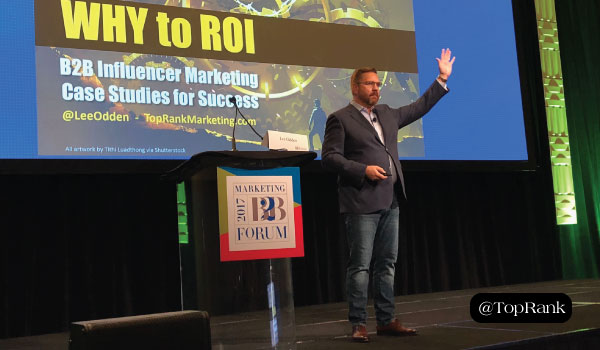
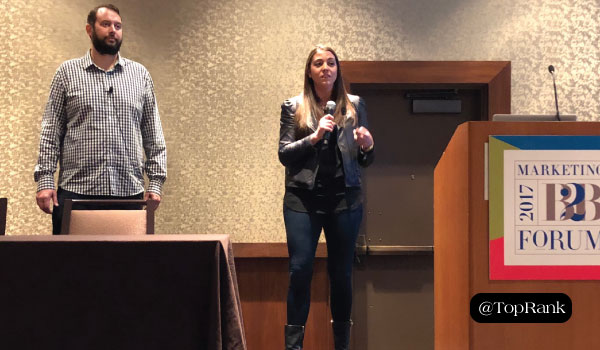
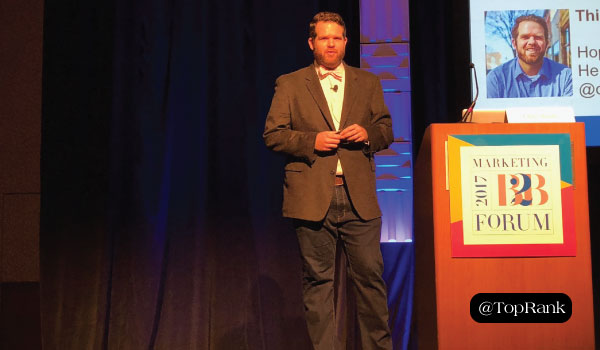

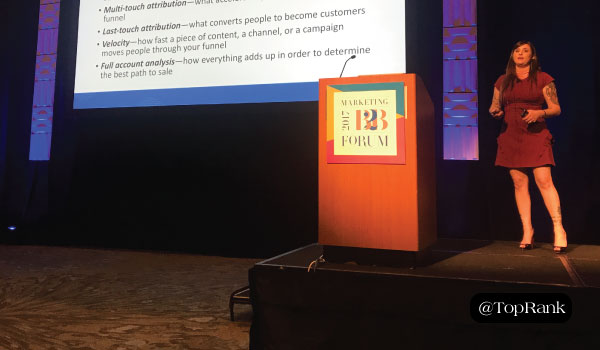


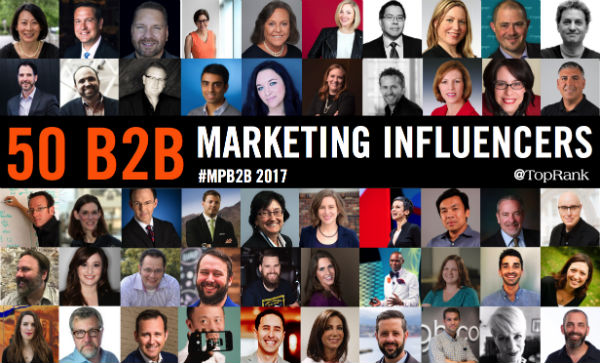













 Whenever a potential client tells me that they believe their sales people have a “closing” problem, I can be pretty confident that the problem actually lies elsewhere. There are a bunch of reasons why the macho “always be closing” mantra no longer works in B2B sales.
Whenever a potential client tells me that they believe their sales people have a “closing” problem, I can be pretty confident that the problem actually lies elsewhere. There are a bunch of reasons why the macho “always be closing” mantra no longer works in B2B sales.
 Bob Apollo
Bob Apollo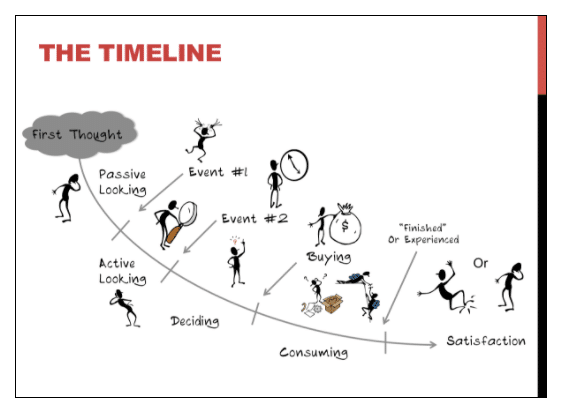
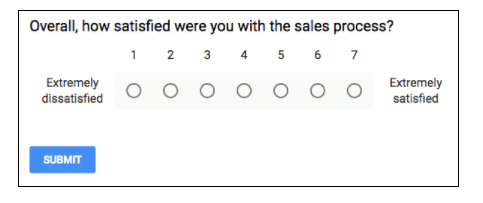
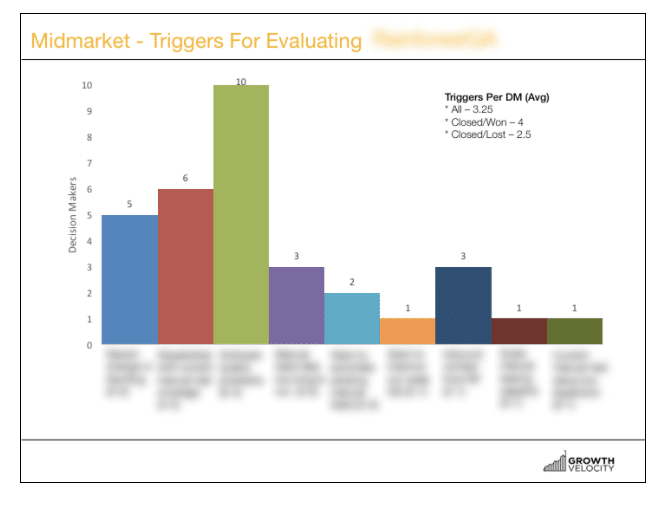





 productivity rate is now $166.67 per hour.
productivity rate is now $166.67 per hour.
 You won’t be able to anticipate every Q&A you’ll encounter ahead of time. But developing stock copy for your executive summary and adding new Q&A responses to a central document – which you can draw from again in the future – can trim huge amounts of time off your RFP process.
You won’t be able to anticipate every Q&A you’ll encounter ahead of time. But developing stock copy for your executive summary and adding new Q&A responses to a central document – which you can draw from again in the future – can trim huge amounts of time off your RFP process.
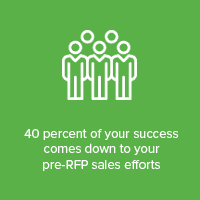 Companies need to know who you are before they receive your proposal. According to data gathered by
Companies need to know who you are before they receive your proposal. According to data gathered by 
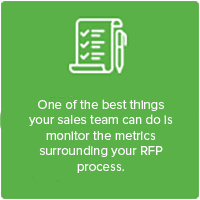 Regardless of which of the above strategies you choose to implement, one of the best things your sales team can do is monitor the metrics surrounding your RFP process.
Regardless of which of the above strategies you choose to implement, one of the best things your sales team can do is monitor the metrics surrounding your RFP process.



![Download Now: 2024 Sales Trends Report [New Data]](https://no-cache.hubspot.com/cta/default/53/9cdc68ed-d735-4161-8fea-0de2bab95cef.png)










 If she is reading this, hope she doesn’t mind the joke.)
If she is reading this, hope she doesn’t mind the joke.)



 This information is important because it means you’re not alone.
This information is important because it means you’re not alone.




